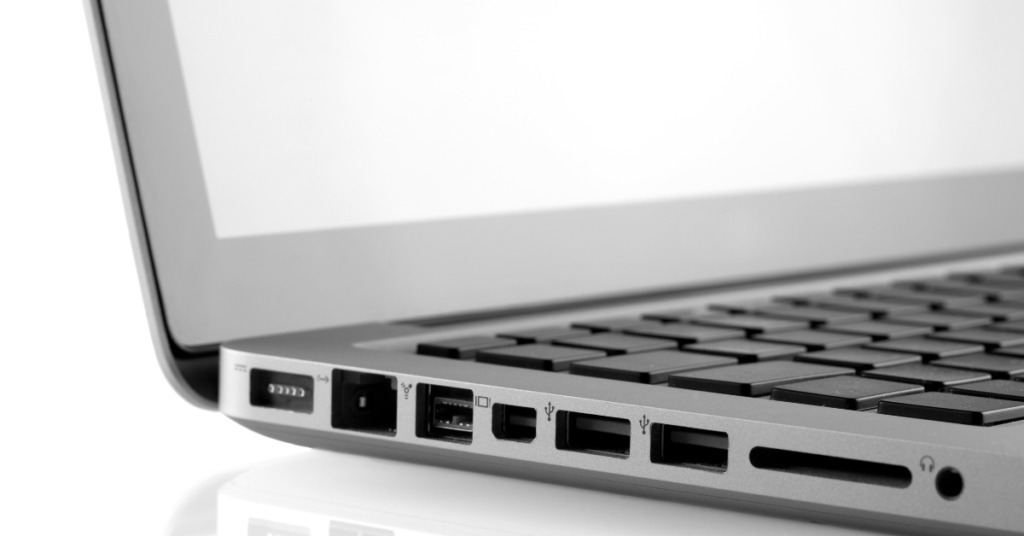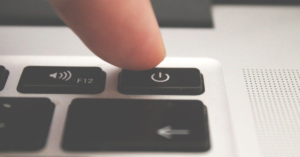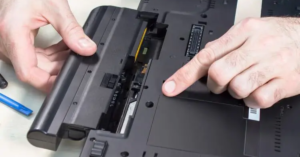Laptops have become an integral part of modern life, playing a vital role in technology, education, work, and entertainment. This blog will guide you through how does a laptop work, its components, and why it is important in today’s world.
What is a Laptop? Its Role in Modern Technology?
A laptop is a portable computer designed for mobility, allowing users to perform tasks such as browsing the web, creating documents, watching videos, and more. Its compact size and wireless capabilities have made laptops essential for remote work, education, and entertainment. With technological advancements, laptops now come in various types, each suited for different tasks, from gaming to business use.
Components of a Laptop
Understanding how a laptop works requires knowing the key components of a laptop that make it function. Below is a breakdown of the major parts of a laptop:
| Component | Function |
| CPU | Acts as the brain of the laptop, processing all instructions and tasks. |
| RAM | Temporarily stores data for quick access to help with multitasking. |
| Storage | Stores all files, applications, and operating system data. |
| Motherboard | Connects all components, ensuring smooth communication. |
| Battery | Provides power for portable use, enabling the laptop to work without a direct power source. |
| Display | The screen that shows the output of processes and applications. |
| Keyboard | Input device that allow users to interact and control the laptop. |
How Does a Laptop Work?
A laptop follows a systematic process when powered on and used:

a) Boot Process
Pressing the power button starts the BIOS/UEFI, which prepares the hardware and loads the operating system.
Did you know? Some modern laptops wake up almost instantly, like smartphones!
b) Operating System and Software
The operating system (Windows, macOS, Linux) provides an interface for users to interact with the hardware and run applications.
c) Data Processing
The CPU takes data from RAM and storage, processes it, and sends results to the screen and other devices.
d) User Interaction
You control the laptop using the keyboard, trackpad, touchscreen, or external devices like a mouse or stylus.
e) Connectivity
Laptops connect via Wi-Fi, Bluetooth, and USB for easy communication and data transfer.
Did you know? Wi-Fi 6 and 6E offer faster, more reliable connections with lower lag!
How Laptops Process Information?
When you perform any task on a laptop, such as opening a file or running an application, multiple components work together to process that information:

a) Fetching Data
The CPU retrieves instructions from RAM or storage. Frequently used data is stored in cache (L1, L2, L3) for faster access.
b) Decoding Instructions
The CPU translates instructions into a usable format. Modern CPUs use pipelines to break down tasks for faster processing.
c) Executing Commands
The CPU performs calculations using ALUs and FPUs to handle math and logic operations.
d) Storing and Outputting Results
Processed data is stored in RAM or storage, while results appear on the screen or are sent to peripherals.
e) Parallel and Multithreading Processing
Multi-core CPUs and hyper-threading let laptops handle multiple tasks at once, boosting performance in demanding applications.
f) AI Acceleration and Machine Learning
Newer laptops have AI chips (NPUs) to speed up tasks like speech recognition, image processing, and automation.
Connectivity and Ports
Laptops are equipped with multiple ports and wireless connectivity options to connect with other devices:
External Ports:

Laptops have ports like USB, HDMI, Ethernet, and audio jacks to connect to external devices such as hard drives, monitors, and headphones. Some of them are:
| Port Type | Function |
| USB | Connects peripherals like mice, keyboards, and storage. |
| HDMI | Transfers video and audio signals to external displays. |
| Ethernet | Provides wired internet connectivity. |
| Audio Jacks | Connects to headphones, speakers, or microphones. |
Wireless Connectivity:
Laptops also come with wireless features like Wi-Fi and Bluetooth to connect to the internet and other devices without the need for cables.
Different Types of Laptops and Their Functions
There are various types of laptops, each designed for specific use cases:
| Type of Laptop | Main Function |
| Ultrabooks | Lightweight, portable laptops for everyday tasks and business use. |
| Gaming Laptops | High-performance laptops designed for gaming with advanced graphics. |
| 2-in-1 Laptops | Convertible laptops that function as both laptops and tablets. |
| Business Laptops | Laptops optimized for professional work with strong security features. |
| Chromebooks | Affordable laptops that run on Google’s Chrome OS, ideal for basic tasks. |
Conclusion
Laptops have evolved to become powerful, versatile machines capable of handling a wide variety of tasks. From processing information to managing energy efficiently, their role in modern life cannot be overstated. Whether for work, education, or entertainment, laptops have become an essential tool in almost every aspect of our daily routines. Explore the future of laptops.
FAQ’S
Which is better: laptop or notebook?
A laptop is generally more powerful and suited for demanding tasks like video editing or gaming, while a notebook is lighter and more portable, ideal for simple tasks like browsing and word processing. If you need performance and multitasking, go for a laptop. If portability and basic use are your priorities, a notebook is the better option.
Why are laptops now called notebooks?
Laptops are often called notebooks because of their slim, lightweight design that resembles a traditional paper notebook.
Can a notebook be a laptop?
Yes, a notebook can be a laptop. In fact, the terms are often used interchangeably.
Is it better to study on a laptop or notebook?
A notebook is great for portability and basic tasks like note-taking, while a laptop is better for more demanding tasks like multitasking or running specialized software. Choose based on your study needs.
How do I choose a laptop?
Consider performance (i5/i7 or Ryzen 5/7), RAM (8GB+), SSD storage (256GB+), display (Full HD), portability, and battery life (8+ hours). Set a budget based on your needs.










